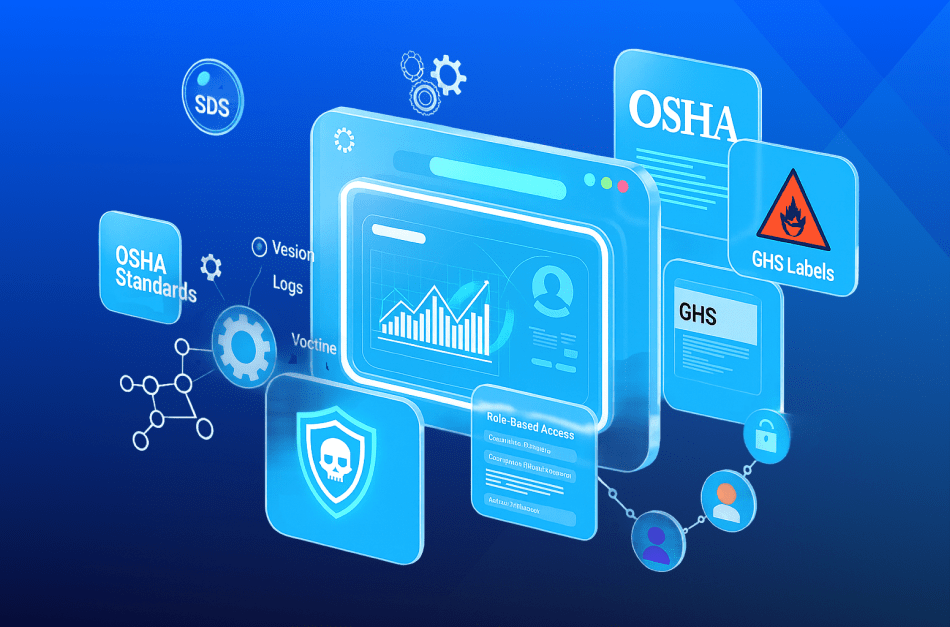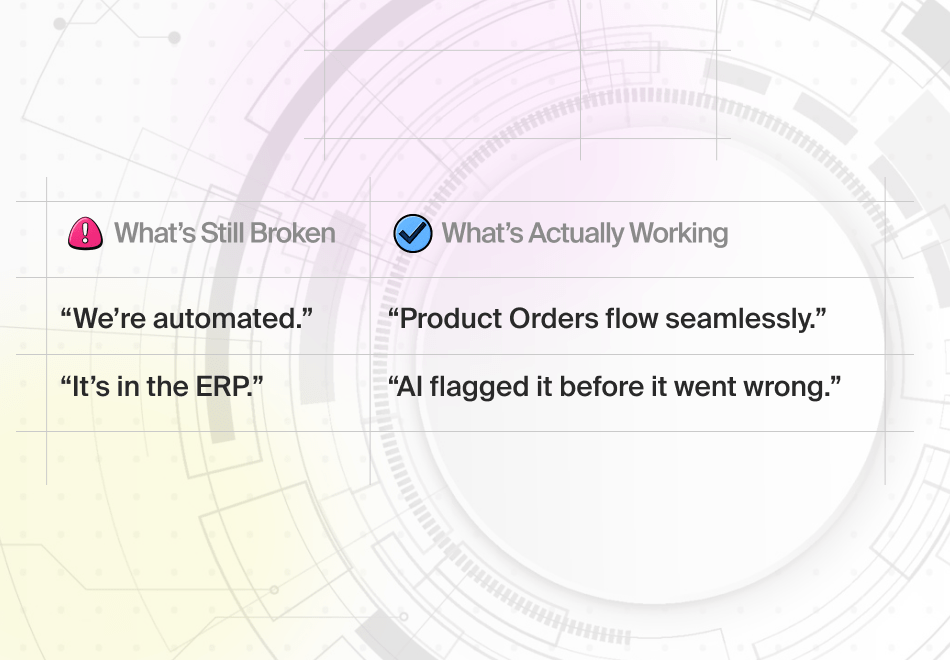At a Glance
- ERP systems play a vital role in running the operations of an enterprise. They have a long-term impact on people and processes within a company.
- Evaluation of ERP systems is overwhelming and requires thorough vetting of various factors that are important to your company.
- This article evaluates at length, the key differentiating factors between Microsoft Dynamics 365 for Finance and Operations and SAP.
- Microsoft Dynamics 365 offers the lowest Total Cost of Ownership (TCO) among all tier 1 ERP vendors. Its payback period is 18 months lower than that of SAP.
- Microsoft Dynamics 365 offers the highest ROI of approximately $17 per one dollar spent within the first three years. This return is exponentially higher considering the ROI for competing ERP and CRM products is $7.23 and $8.71, respectively.
- Microsoft Dynamics is best suited for progressive mid-market companies aiming to make it big to support growth to an exponential degree.
You have a lot to gain or lose from an ERP system. You have established a core team to evaluate ERP systems and spent the last few months evaluating a number of Tier 1 and Tier 2 ERP Vendors. Your team sat through hours of very boring and a few exciting demonstrations of the system and how they fit your organization.
Evaluating an ERP is overwhelming. Our series of articles focused on ERP comparison will help you make informed decisions. We examine various business applications and how they compare to Microsoft Dynamics 365. Our hands-on experience in ERP systems like SAP, Oracle, Microsoft Dynamics, Infor etc. allows us to provide an objective comparison in the strengths, weaknesses and relevance of these applications.
This article provides everything you need to know while evaluating SAP and Microsoft Dynamics.
What matters?
An ERP system is at the heart of every company. It helps unify people, processes and technology across the organization so that business units function efficiently and work in unison towards a common objective.
When evaluating an ERP, here are a few key parameters that matter most –
- Business process mapping and requirement analysis
- Budget
- ERP Vendor Comparison
- Total cost of ownership
- Return on Investment (ROI)
- Out-of-the-box Features & Functions
- Duration of Implementation
- Types of Deployment
- Operational Disruption
- Competency of the partner, partner network and resources
- Evaluation of not just the application but the Ecosystem
- Technical evaluation including role of ERP in the company’s overall digital strategy
Requirements vary across organizations and so does budget – these are discussions that need deeper consultations and analysis. What stands out as a benchmark is the comparison of functionality, strengths, ease of use, pricing, and value proposition offered by vendors.
Do it once, do it right.
Microsoft has perfected it!
Microsoft has put in visible efforts towards tethering customers into a Microsoft-centric world that is themed around user-friendliness. The company’s continued investment in cloud, user experience, analytics and integration is aimed to increase productivity while reducing overall costs.
Windows from Microsoft is the most popular operating system owing to its ease of use; and per NetMarketShare, the OS is used in over 87% of desktop/laptop globally. Continuing its recipe for success, Microsoft has ensured that the Dynamics platform resonates similar minimalistic yet powerful productivity & design elements of Windows. Multiple acquisitions including Navision, Axapta and Great Plains have helped Microsoft build its flagship ERP product today – Microsoft Dynamics 365 for Finance & Operations.
Microsoft Dynamics 365 for Finance & Operations has been built consistent with the intent of creating a simple, powerful and a common ecosystem. An ecosystem that is easy to use, secure and scalable.
Microsoft Dynamics 365 arguably enjoys a dominant position across small and medium enterprises. The scalability of the application has allowed successful deployments at large retail and manufacturing companies with thousands of users. Microsoft Dynamics has established itself as a viable alternative by voiding the complexities of larger applications such as SAP and Oracle.
Below are just a few well-known large enterprises that use Microsoft Dynamics 365:

Microsoft Dynamics 365 vs SAP – The Comparison

Factors such as implementation time, time to achieve stable state, disruption to business functions are amongst the top qualitative parameters.
- Per Panorama Consulting, Microsoft Dynamics 365 users reported an average 12 months implementation time compared to its peer SAP with close to 15 months’ time.
- Average timeline of 12 months is relevant to medium and high complexity implementations.
- For smaller companies and low complexity implementations, the time to implement is less than 12 months. Get more information from XcelPros on rapid / accelerated implementations for Microsoft Dynamics.
- Compared to SAP, Microsoft Dynamics 365 users took maximum of two months to achieve stable state as against six months in case of the former.
- The above finding was also echoed by Forrester Research which reported that SAP users experience more material operational disruption during their implementations than the other Tier 1 providers and that Microsoft Dynamics 365 had the fewest (2017).

Microsoft made it simple, making it an ideal software for mid-market companies.
- As evident from the above comparison, Microsoft Dynamics 365 scores over SAP in most categories including critical parameters such as time for installation, ease of customization, user experience, TCO, and customer support.
- A business user needs simplicity. Unlike SAP, which has approx. 70,000 screens for a user to navigate and discover what is useful for his business, Microsoft provides ease of use resonating the very familiar daily used products such as Outlook, Word and Excel.
- Dynamics 365 allows users to customize the aesthetics of the system for a personalized experience. This includes customization of themes, color, user dashboard both on desktop and hand-held devices including mobile.
- With embedded business intelligence, the platform assimilates and analyzes customer data to understand patterns and suggest appropriate actions so that sales and marketing organizations are better equipped. Features such as relationship assistant, cortana intelligence, auto capture, and email engagement help gather better sales intelligence and actions thereafter.
- With Microsoft’s vast ecosystem, Dynamics 365 users can access every module within the system, without the need for investing in other applications. Upgrades and security patches are seamlessly delivered automatically through cloud without causing any disruption to the business functions.

A user story highlighting the power of Microsoft Dynamics 365
Background: A multinational Jeweler needed to modernize its IT services to make use of data collected over time and move from predictive analytics to peerless point-of-sale customer experience.
Problem statement: The global Jewelry house wanted to empower its sales and marketing team with an unified and all-inclusive customer database to create a personalized experience for its customers across all channels (in-store, web, and mobile). They needed to overhaul their IT system to reflect modern age aspects of the business involving back-end IT to POS interactions and facilities management.
Solution: The Jeweler entrusted this responsibility on Microsoft Dynamics for Retail, Finance and Operations, and Customer Service. Integrating information across stores and online channels, staffers were equipped with behavior and purchase patterns of their customers. Using a mobile device, sales personnel were able to access the business relationship, personal information such as birthday, anniversaries, special occasions, to develop better personalized relationship. Marketing team was able to enhance the relation with curated messaging, new product launch and discount offers.
Result: With data consolidated and centralized within Microsoft’s ecosystem, pulling up customer data that otherwise took four minutes were available in few seconds. Using Power BI, the company was able to create actionable insights visualized over an interactive dashboard. With the assurance and reliability of Microsoft’s ecosystem, the Jeweler was able to streamline business processes that helped in further expansion of business.
Power of One-Microsoft Ecosystem
Microsoft ecosystem includes a comprehensive suite of applications ranging from analytics, visualization, artificial intelligence, IoT, PowerApps, CRM, Office 365, and a host of other third-party applications. The seamless integration and the communication of these applications is the key differentiator between Microsoft and any other applications in the market. A few benefits of the ecosystem –
- Improved connectivity without the need for customizations
- Improved productivity to enhance efficiencies
- Improved visibility of information across business functions
- Ability to download and implement additional functionality / apps from appsource.microsoft.com. This gives you the power to scale with industry and function specific apps on Microsoft Appsource.
Ex. Integrated Chemical Management (iCM) – This provides extensive functionality in Label Management and SDS Management for Chemical, Pharmaceutical, Life Sciences and Food Industries. Anyone that works with chemicals – industrial, pharma or food grade will need this app. Every company in these industries needs SDSs and be able to print labels. Without this app, companies need to spend tens of thousands of dollars to customize Microsoft Dynamics 365 workflows, reports and many more elements. - Capabilities to support CRM, ERP, and human capital management modules
- Higher accuracy to determine project costs and increased operational efficiency
- Seamless integration with SharePoint / best document management system
- Advanced analytics and scope of cross-selling/up-selling using Field services
- Collaboration and visualization
- Application development (with PowerApps)
- Higher efficiency when onboarding vendors/customers due to familiarity with other Microsoft products

Higher Return on Investment (ROI) and Lower cost of ownership (TCO)
Cost is one of the key parameters that differentiates Microsoft Dynamics 365 from its competitors. Dynamics 365 is designed to be flexible to adapt to the changing needs of customers. Independent surveys conducted by research and consulting houses unanimously rate Microsoft Dynamics 365 to have the highest return on investment (ROI) and low overall cost of ownership platform.
- Microsoft Dynamics is offered on-premise and in the cloud
- Licensing has been designed to include all roles and responsibilities within an enterprise.
- At a high-level, On-premise and Cloud have 3 tiers of user licenses and a device license.
- Cloud is priced at per user per month
- Full Access / Enterprise – $190
- Functional User – $50
- Task User – $8
- On-premise is priced at a one-time license fee + 16% Annual Maintenance Fee
- Per a study by Nucleus Research, Microsoft Dynamics 365 offered the highest return on investment, recovering approximately $17 per dollar spent. This number is exponentially higher considering the combined ROI for ERP and CRM at $7.23 and $8.71 respectively.
Microsoft Dynamics 365 can scale up/down with your changing business needs
Scalability is a key element of the ERP you choose. Only Microsoft allows use to scale up/down as per your business needs. In the case of on-premise, you have the ability to lock your maintenance to the price paid at the time of signing the contract. Customers like this flexibility to add / alter licenses as their resource & business needs change.
- Benchmarked with efficient performance scaling up thousands of users, Microsoft is completely capable of handling your business requirements. It offers extensive functionalities across financials, supply chain management, and customer relationship management.
- Ex. You can start with the ERP today and add Microsoft Dynamics CRM later. The scalability aids in adding functionality later as required.
- Dynamics 365 offers enterprise-wide reporting, powerful business insights, tools that support decision making – all these at a relatively lower cost while scoring high on flexibility and ease of use.
Take Our Assessment to Get Started With Digital Transformation








